- Home
- Peter Carey
Wrong About Japan Page 8
Wrong About Japan Read online
Page 8
“Thank you, Takashi, but a friend of mine lives there. We are going to watch My Neighbor Totoro in his apartment.” If I thought that mentioning this famous anime would placate him, I was wrong.
“Oh yes, Totoro is nice. Children like it very much,” he said, and I suspected that he now wished to share his animus against Totoro with Charley “You have not seen it in New York? When you were younger, Charley?”
“A few times.”
“So why come to Japan to watch what you have already seen?”
“It’s for my dad’s book.”
“We want to understand it in a Japanese way,” I said, “so we are watching it with a Japanese friend.”
Takashi considered this, his head cocked thoughtfully to one side. “Yes,” he said, “foreigners cannot understand us, but if you wish, you could come to my grandmother’s apartment.”
I understood, even at the moment, that he was honouring us by inviting us into his home. I thought also that his grandmother might be thrown into total disarray at having to entertain two gaijin. Just the same, it was with real regret that we declined the invitation.
“If you like,” said Takashi, “you can come to my grandmother’s apartment and I will show you tapes of Mobile Suit Gundam never released in America. I will translate. Perhaps you like Miyazaki, but he is the Japanese Walt Disney. You have your own Walt Disney.” He widened his large eyes, which at that moment seemed as if they’d been drawn by Uncle Walt himself.
Hayao Miyazaki has often been compared to Walt Disney but neither this nor the fact that Disney owns American rights to most of Miyazaki’s work makes this comparison remotely apt. Miyazaki is a great, not merely successful, artist and My Neighbor Totoro a truly masterful film that can sustain frequent viewings, a far more serious accomplishment than, say, Bambi or Snow White.
“But tomorrow,” I said, “we are going to Mr. Miyazaki’s Ghibli Museum with some other Japanese friends. Perhaps we could get tickets for you. We are hoping we might meet Mr. Miyazaki there.”
“You will never meet Mr. Miyazaki,” Takashi said sternly. “I am very sorry, but whoever has promised this is wrong. All Japanese people know this. I myself prefer the work of Mr. Tomino, who as you probably know worked with Osamu Tezuka on Astro Boy and you have already met with him. But Mr. Miyazaki is more difficult to meet than Walt Disney.”
“Takashi,” I said, “Walt Disney is dead.”
“His point,” said Charley.
“I will draw you a map,” said Takashi. “How to come to my grandmother’s. And from his jacket pocket he produced a piece of fine onionskin paper on which he then drew the most exquisite map. “For my grandmother, you should bring a small gift. I will show you where to have it wrapped.”
“But Takashi, we already have an appointment tonight.”
“Just the same,” said the wilful young man, “perhaps the other appointment can be changed.”
Charley has this map still, amongst his collected treasures of Japan. It is very beautiful indeed, but every time I look at it I remember Takashi’s upset face as he left Starbucks that day.
“I think he’s hurt, Dad.”
“What could I do?”
“I know.”
“We have to see Kenji.”
“I know.”
Across the street, the first tourists of the day were entering the arcade of food, kitsch, commercial opportunism, which would lead them to the very beautiful reconstructed temple of Sensoji. Soon, on the way to visit the temple, we would buy a tiny plastic statue of a Mobile Suit, but for now we stayed in Starbucks, guilty and miserable.
9.
“All I want,” I had said to Kenji, “is to watch a video with you.” What I had in mind was to freeze Miyazaki’s images at will and ask him questions about anything I didn’t understand.
Kenji is a busy architect with a Tokyo practice, and I really had no right to make such a request. Kenji was gracious and too generous to even hint as much, not for a second, but the questions of where and how to watch this video were not easily answered. Our ryokan would have no VCR, so that was out. Kenji was living at that time with his parents. To see the video there, I assumed, would have raised more problems than a foreigner could begin to imagine.
AGGHHHH, as they say in manga.
“Perhaps,” Kenji said, “we could watch it in my office,” but I could see he was worried about this too, possibly because this venue might appear less hospitable than he would like.
In the end, however, this is exactly where we found ourselves, although “office” hardly describes a space so conspicuously empty of anything that would identify itself as such. I don’t mean to suggest that it was minimalist, only that it was unusually large and there was nothing much in it. Was there a mystery here? I seriously doubt it, although this is how it is with travelling—the simplest things take on an air of great inscrutability and so many questions arise, only to be half born and then lost as they are bumped aside by others. The most mundane events take on the character of deep secrets.
I remember being seated next to a pugnacious New York celebrity at dinner. When I asked him a question, he glowered at me and said, “Are you interviewing me?”
“You better hope not,” I told him. “I’m a terrible reporter.”
I have not one note on the location of Kenji’s office. I have a vague memory of expensive-looking apartment houses and a paucity of shops. Inside, floating on a beige or off-white carpet was a sofa, a chair, a VCR and monitor.
I expected Charley to be pining for his friend Takashi, but Kenji had provided the most interesting tourist experience of all: exotic junk food in plastic bags. There were three different sorts of junk food but when, months later, I asked Charley what he had eaten, only one item had stuck in his mind. “It was like a cylinder,” he said, “and it was sort of crunchy and there was, whatchamacallit, fine brown sugar so it was really sweet. It tasted sort of weird, but it was very good.”
Thus set up, with a very large bottle of Coca-Cola between us, we began to watch one of the masterpieces of Japanese animation.
Totoro finally resolves itself as a charming hymn to animism, a world of ghosts and spirits, in particular the spirit of the forest. It does this by telling the story of two young girls who, with their father, move to an old-fashioned house in the country while their mother is in hospital. Like all of Miyazaki’s work, the film exhibits the most pleasurably detailed physical world, landscape in all its complexity, and architecture so keenly observed that one immediately recognises it was drawn from life. This is something far richer and more sophisticated than the flat, cute world of Disney.
Miyazaki’s production company is Ghibli (from which Grave of the Fireflies also emerged) and in the Ghibli Museum you can flip through huge volumes of location photographs and see the director’s sketches pinned to the wall and lying loosely on the tables, as casually as in an artist’s untidy office. Part of Miyazaki’s magic is the way he introduces his cartoon characters—exaggerated in away that the landscapes and architecture are not—into this keenly examined real world. This is not to suggest that the depictions of the human figures are less truthful or detailed. Indeed, one of the film’s great pleasures is the very compelling characterisation, and the joy this can stir in the viewer’s heart.
The film begins with father and daughters travelling in a small van, their possessions strapped down onto its roof. The girls are full of wonder. They pass a capped man riding a bicycle across a bridge. “Mei!” calls the ten-year-old to her four-year-old sister. “Hide, Mei.” Then, a moment later, she says, “It’s okay, it’s not a policeman.”
So what does this mean? But the film moves so fast that I didn’t ask Kenji to pause the tape until a moment later, to wonder what their voices revealed about the characters.
“That they are city people,” he said. “That they use a sort of polite pronunciation, and that the father, when he talks to them, is well educated.”
The road passes through fields, o
ver a bridge, turns a corner and now we see how rural this is, nothing like the concreted landscape Alex Kerr attacks so eloquently in Lost Japan. The road is unsealed, rutted.
“Stop,” said Kenji.
As Charley and I had already seen the film three times, the image Kenji froze was so familiar that it was hard to imagine what else we might learn from it. The right-hand side of the frame was dominated by the trunks of two huge trees; the gloom of the woods was deep, and one already felt the force of nature. What Kenji now pointed out, what Charley and I had never noticed, was that hidden in the shadows were some steps and a torn, a red gate to a shrine, an early hint of the film’s religious reverence for nature. This is so subtle, though, that we’re more likely to notice that the truck is a three-wheeler, that it splashes through a puddle beside the two big trees, and emerges into a bright landscape of rice paddies. It is part of Miyazaki’s genius that as he celebrates the world of nature, trees, flowers, as the girls look into a stream and exclaim about a fish, he also shows us an empty sake bottle abandoned in the water, and that this is done in some morally neutral way.
“You can see,” Kenji said, “that this is set twenty or thirty years ago.”
In fact, this had not occurred to me.
“Perhaps,” he said, “it is Miyazaki’s childhood. What tells us that this is so long ago? Well, firstly the three-wheeled van, and then the local bus it passes. See the model. He is not being romantic about the countryside but he is perhaps nostalgic about his childhood, and for a physical world that, while not pristine then, has been seriously messed-up since.”
The three characters finally arrive at the house on foot. To my eye, it is a simple farmhouse, rundown, rustic, but also particularly Japanese. The first time I saw the film, I wished to live in that house, and it was because of this that I thought it might be interesting to watch it with an architect, to extract all the information that was before my eyes but culturally inaccessible. Now Kenji explained that this was in fact two houses, an old house with a modern addition, a Western-style front constructed in perhaps the 1920s.
Western? It had seemed so Japanese.
Wonderfully, this was not the only misunderstanding. First, Kenji told us, this dusty, slightly rundown house belonged to a rich family. “Who else could afford such a luxury? Also,” he said, “it is a kind of a ghost house.”
“What makes it a ghost house?”
“Well, as you will see in a moment, there is a well.”
“So?”
“The well is a very animistic thing. It is a hole to another world, to ghosts and spirits. A Japanese viewer sees that well and immediately understands that this will be a story about spirits. Besides— there!—the older girl is calling. She says, This is like a haunted house.”
A moment later we see how this notion is developed: girls play, running, whooping, performing handsprings which serve to draw them (and us) from the house and into nature. Suddenly we are confronted by a vast and ancient camphor tree which looms like a mountain above the children. This tree will be a major character in the story, the world of the wonderful mythic Totoro. But only after the girls enter the house, and a single nut drops mysteriously to the floor, do we really begin to feel the place is haunted.
It is just at this point, as the father offers rational explanations—squirrels, perhaps, or acorn mice—that Miyazaki shows us that well, which in New York City had seemed merely commonplace, utilitarian.
Then the girls open the back door. It is bright outside, dark inside. As the door swings open, we see tiny black creatures and hear a high-pitched sort of “squittering” as they flee the light. We are reminded of both bats and cockroaches, but these are neither.
The girls scream but then, without reference to each other, square their shoulders and march forward, an action that not only strengthens the drama, but also commences an architectural tour. By freezing the frame at any point, we could have had a tutorial on the Japanese house, but let us move forward to the bathroom. “Father, Father,” the girls call. “There’s something in here.”
“What?”
“We don’t know. Squirrels? Not cockroaches. Not mice.”
The father peers inside the bath and there, rendered in loving detail, is a Japanese soaking tub (the history of which might be a book in itself), where later we will see the family bathe together. Kenji will point out that the bathroom is illuminated solely by light “stolen” from the kitchen next door, which is not only architecturally ingenious, but perfectly revealing of how Japanese families traditionally bathed, with no shred of shame or immodesty.
Meanwhile, the girls are still excited about these spooky little black things they have seen.
“Ah so,” says the father (yes, really, that is what he says). “It must be makkuro kurosuke.”
“Makkuro kurosuke?”
“The black spots that appear in front of your eyes,” he explains, “when you come inside on a bright day.”
The girls laugh. “Come on out, makkuro kurosuke. Come out or we’ll pull your eyes out.”
Miyazaki then undercuts this rational explanation, showing us these black dust bunnies scuttling into a drainpipe by the children’s feet.
“Okay,” the father says, “now we need to find the stairs to the second floor. Can you do this for me? We need to open the windows.” The children run off and our architectural tour continues, as fine a tour as you could find in any museum. This is at once a real house and a vividly imagined one, filled everywhere with particular detail: shoji with two transparent panels in each; a circular window between rooms; tatami over which the children, shoes still on their feet, must walk on their knees.
Very soon there will be more drama, nuts falling and strange little black spirits rustling, skittering from the light. Mei catches one and carries it downstairs, trapped like a mosquito in her hands, and from here the story moves relentlessly forward to her meeting with the Totoro, the spirit of the woods, and introduces us to the sick mother, who unlike the stock figure in an American movie neither dies nor returns home.
That night in Minato-ku, Charley fell asleep quite early. He had, after all, seen the film many times already and the purpose of this particular viewing was not to annotate it to death but to understand that this beautiful entertainment contained a whole history and culture hidden between the frames.
We then arrived, however, at the most exciting example of hidden signs. High in the ceiling of the attic, where Mei caught the dust bunny, there is an ornament, no more commented on than the red gate to the shrine or the simple rope around the camphor tree indicating that it’s sacred. Though the director does nothing to draw our attention to it, I recall the paper decoration hanging from the ridgepole looked something like a bird. It would have existed, Kenji explained, from the time construction on the house began. We were now talking not of figments made of pixels but of actual substances. During construction the ornament on the ridgepole would have been blown by the wind and drenched by rain until it was torn and tattered. Once there was a roof to shelter it, this weathered talisman would have been tucked down into the attic and kept there, protected, for good luck. All this Charley would learn in the morning; for now, at his father’s favourite part, he was emitting a sweet adenoidal snore.
Kenji found Charley a quilt and went on to tell me that Japanese carpenters are often—unlike their visualist cousins in Shinjuku—very religious. A great many Shinto ceremonies are associated with the construction of a house and these are part of Kenji’s life in Tokyo today He began describing ceremonies with rice and salt and sake and I later found the same information in William Coaldrake’s Way of the Carpenter, which is far more quotable than my so-called reporter’s notebook: “Young bamboo stalks are used to mark the four corners of a sacred enclosure on the building site,” he writes. “These are joined by a sacred rope of new straw (hymenia) bearing sacred, folded white invocatory papers. An altar is erected with a separate table for offerings of rice, salt, fruit and sake…. The most i
mportant ceremony celebrating completion of the assembly of the timber frame, is the ridge-raising ceremony (Joutoushiki or muneageshiki). It includes the ceremonial raising and positioning of the ridgepole, thanksgiving for the safe erection of the frame, and prayers for the long life and well-being of the building and its inhabitants…. In traditional practice, the chief master carpenter himself frequently officiated at the ceremonies, donning the robes of a Shinto priest…. The chief master carpenter was formerly responsible for making the ritual implements and decorations for these ceremonies, such as the ridge plaque and sacred bow and arrow that were attached to the ridgepole during the ridge-raising ceremony, but this practice has largely lapsed.”
Sometime around ten we rewound the tape, still only one-third played, and Kenji, kind as ever, drove us back to Asakusa, where we slipped through the narrow lanes moving bicycles aside as if playing a life-sized game of checkers that would finally lead us to our tatami-matted room where all seven pounds of Gundam Officials, Limited Edition was placed reverently in the tokonoma.
“I feel sorry for Takashi,” said Charley “I think he might be mad at me.”
“Why? For visiting Kenji instead of his grandmother?”
“No, because I’m going to see Mr. Miyazaki. Maybe he thinks I am not loyal to Mr. Tomino.”
“No,” I said. “I’m sure that’s not true. Did you clean your teeth?”
“Yes,” he lied, and immediately fell into a sleep from which he would not be woken.
10.
We would have been wiser to have breakfasted on fish and miso. There was a long, long day ahead, an interview with the elusive Mr. Kitakubo of Blood: The Last Vampire and then a tour of the Ghibli Museum and a visit to Miyazaki’s studio. Our schedule had protein written all over it, but we were weary of live fish and dead fish and battered fish and fish with skewers stuck up their little bottoms. So we left the ryokan, and headed in search of Mister Donut, stepping wide of the early-morning alcoholics feeding their hundred-yen coins into the sake machine on the corner, past the kids with their black hair stripped back to a dangerous-looking anime brown, then crossing over the bridge at the Asakusa View Hotel to the other side of Kokusai Street, where weaving bicyclists sliced between us, quiet and polite as death itself. At last, thank God, we finally located Mister Donut, where we discovered, to our huge surprise, none other than he who had so subtly steered Charley to Starbucks.

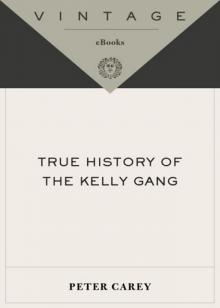 True History of the Kelly Gang
True History of the Kelly Gang 30 Days in Sydney: A Wildly Distorted Account
30 Days in Sydney: A Wildly Distorted Account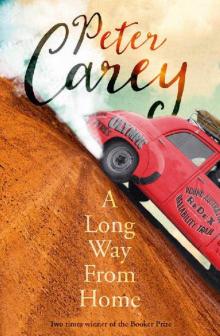 A Long Way From Home
A Long Way From Home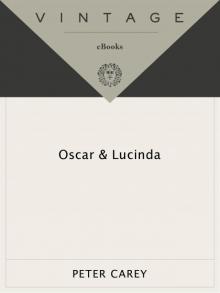 Oscar and Lucinda
Oscar and Lucinda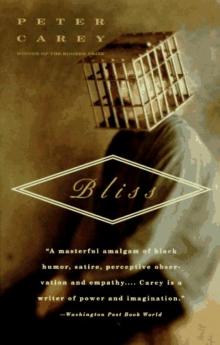 Bliss
Bliss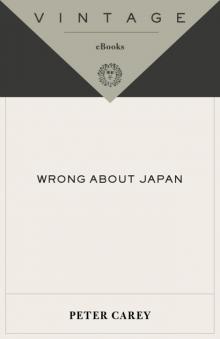 Wrong About Japan
Wrong About Japan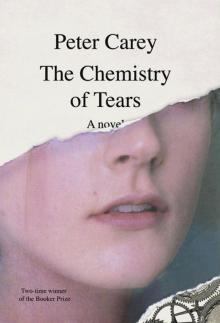 The Chemistry of Tears
The Chemistry of Tears The Tax Inspector
The Tax Inspector Theft: A Love Story
Theft: A Love Story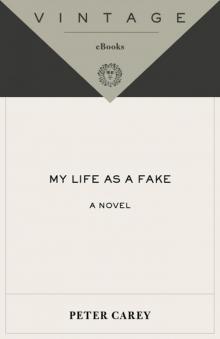 My Life as a Fake
My Life as a Fake Collected Stories
Collected Stories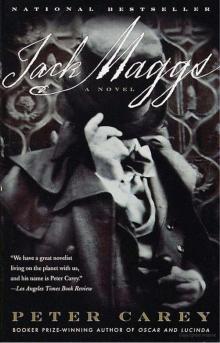 Jack Maggs
Jack Maggs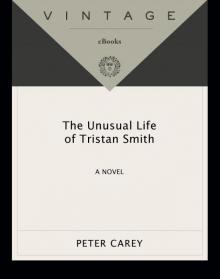 The Unusual Life of Tristan Smith
The Unusual Life of Tristan Smith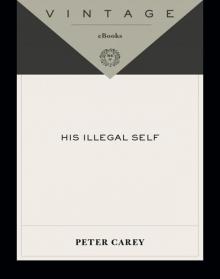 His Illegal Self His Illegal Self His Illegal Self
His Illegal Self His Illegal Self His Illegal Self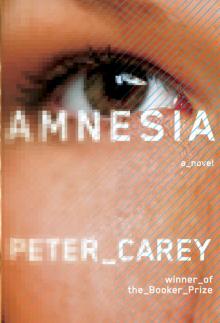 Amnesia: A Novel
Amnesia: A Novel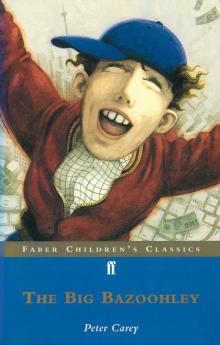 The Big Bazoohley
The Big Bazoohley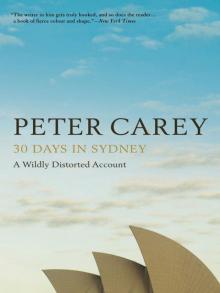 30 Days in Sydney
30 Days in Sydney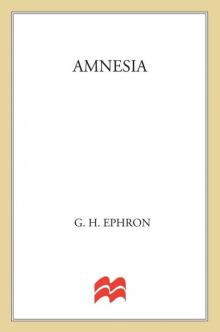 Amnesia
Amnesia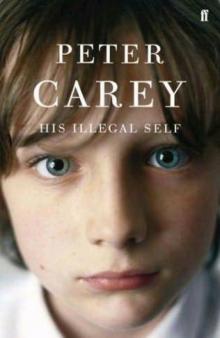 His Illegal Self
His Illegal Self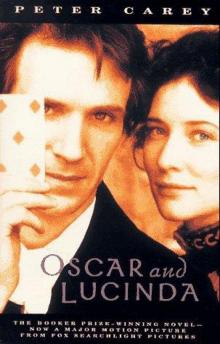 Oscar and Lucinda bw-1988
Oscar and Lucinda bw-1988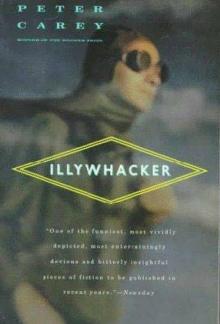 Illywhacker
Illywhacker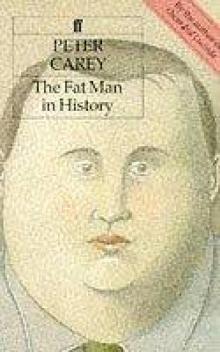 The Fat Man in History aka Exotic Pleasures
The Fat Man in History aka Exotic Pleasures